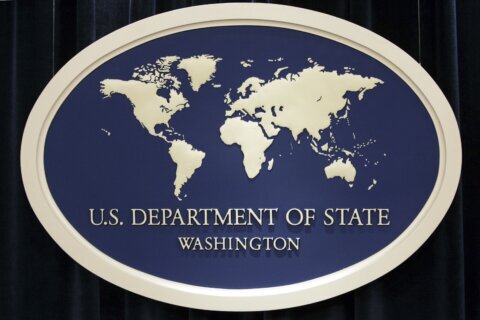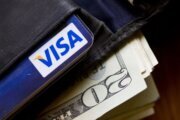Are you looking for a payment platform to streamline the way you send and receive payments, with additional banking and investing features? Cash App may fit the bill. Learn more about how to use Cash App and how it compares to other popular apps in the peer-to-peer payment space.
[Read: Best Checking Accounts.]
What Is Cash App?
Cash App is a financial services platform owned by Block (formerly Square) that allows you to send or receive cash, bitcoin or stocks. You can also get the Cash App Card debit card, connect direct deposits to your Cash App account, and use your account like a savings account.
If you want to know how to use Cash App, here’s a breakdown to get you set up.
How Does Cash App Work?
Cash App works like other payment platforms in that you download an app, add a funding source and then you can begin using it for cash transactions. Here’s a step-by-step explanation of how to use Cash App:
1. Download the app. Cash App is available for both iPhone and Android.
2. Set up a Cash App account. Follow the prompts to enter your contact information. You can also choose your “$Cashtag,” the app’s fancy moniker for username.
3. Link Cash App to your bank account. Just enter your debit card information.
4. Add cash to your Cash App. Once your bank is linked, you can set up a transfer if you want to put funds into your Cash App.
Note: There are other ways to add cash to your Cash App account if you prefer not to link your bank. Instead, you can deposit paychecks or tax returns, or you can visit a participating retailer to deposit actual cash into your Cash App.
[Read: Best Savings Accounts.]
Who Can Use Cash App
Anyone 13 or older can sign up for a Cash App account. Users between the ages of 13-17 can unlock features like peer-to-peer transactions, the Cash App Card, investing, bitcoin and Cash App Pay by having their account sponsored by a parent or guardian.
How to Use Cash App
Once you have money in Cash App, you can start using the app for everyday transactions in place of cash. You can also use it to send and receive bitcoin and to buy and sell stocks.
— Sending and receiving money from friends. Anyone else with Cash App can send you a payment and you can do the same. This is convenient for friends who want to split a dinner check, for example. You can send and receive up to $1,000 every 30 days, but can raise that limit by verifying your account with your Social Security number.
— Use Cash App for payments. You can buy merchandise and pay for services using Cash App by setting it up as a payment source in your Apple Wallet or Google Wallet. You can also request the Cash App Card, which works like a debit card. You can use it for purchases or to take withdrawals from an ATM.
— Stock trading. Cash App Investing is a feature of the app that lets you buy, sell and give stock shares to others. There is no commission fee.
— Bitcoin buying and selling. You can use your Cash App balance to buy bitcoin, and you can also receive bitcoin or use it to pay others.
How Much Does Cash App Charge?
Cash App is a completely free app, whether you’re sending or receiving money from your Cash App balance or a debit card. Even international transactions do not have a fee. Cash App charges a 3% fee to send money from a linked credit card. Standard cash out transactions are free and take one to three days to process, but there is an option to instantly transfer funds for a fee (0.5%-1.75%) where the funds will become available within minutes.
If you are using a Cash App Card to take out money at an ATM, you will be charged a $2.50 fee by Cash App, however. Users who receive at least $300 in paycheck direct deposit in a given month are eligible for free withdrawals from in-network ATMs and one instant reimbursement from an out-of-network ATM transaction for 31 days.
How to Use the Cash App Card
The Cash App Card works like any other Visa debit card. The card can also be linked to your Google Pay or Apple Pay accounts and wallets. You can also set up cash back on your Cash App Card, which will count towards your ATM limit.
The card comes with a few transaction limits:
— $7,000 per transaction or per day
— $10,000 per week
— $15,000 per month
The card’s access to ATM transactions also comes with limits:
— $1,000 per transaction or per day
— $1,000 per week
The limits reset at 6 p.m. Central time each day, Saturday, and last day of the month, respectively.
How to Use Cash App Without a Card
If you don’t have or don’t carry the card, though, you can still use Cash App. One way is to add Cash App to your Apple Pay or Google Pay wallet.
[Read: Best CD Rates.]
What Bank Does Cash App Use?
While Cash App offers several banking features like debit cards and savings accounts, it is a digital financial platform and not a bank. The Cash App Prepaid Card is provided through a partnership with Sutton Bank. Wells Fargo Bank provides FDIC insurance for the Cash App Card. Lincoln Savings Bank provides Cash App’s banking products.
Is Cash App Safe?
Cash App partners with Wells Fargo to provide FDIC insurance up to $250,000 for stored balances on your Cash App Card, and any accounts you sponsor. If you don’t have a Cash App Card then your balance in the app isn’t protected by FDIC insurance.
Cash App Alternatives
If Cash App seems like it has more features than you need, or you prefer another app that more people in your social circle are using, here are some others to explore.
Apple Cash
If you and your friends and family have iPhones, Apple Cash lets you text cash payments and receive money from other users.
How Apple Cash compares to Cash App: Apple Cash is only for Apple users, whereas Cash App works across platforms.
Venmo
Venmo is a popular payment app that feels like a social media platform. It lets you send and receive money to other users (funded from a linked bank account), but isn’t really useful for making online purchases or in-store shopping.
How Venmo compares to Cash App: Many people use Venmo, making it very convenient to use with your contacts, but it lacks Cash App’s additional functions like the Cash Card and investing options. Venmo is also only for domestic transactions, while Cash App can be used internationally.
Zelle
Zelle has over 100 million users and partners with more than 1,800 banks and credit unions. This allows for instant transfers between accounts.
How Zelle compares to Cash App: Zelle doesn’t offer products and services like the Cash Card or Cash App Investing. Instead, it’s an intermediary between banks.
More from U.S. News
Venmo vs. Paypal: How These Payment Apps Stack Up
How to Use Cash App originally appeared on usnews.com
Update 08/05/24: This story was previously published at an earlier date and has been updated with new information.







